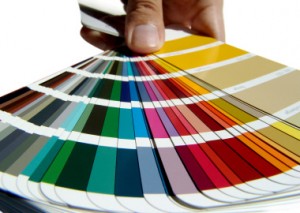5 Logo Design Tips for Your Business
Logo design services run rampant these days. From logo contests to (supposed) $99 logos online, you can find a logo to fit your budget. But the important question is: does it fit your brand? Are you receiving quality design services or are you receiving just another set of clipart with a name attached to it?
If you’re in the market for a new logo design for your business, read on for some tips on how to make sure you are working with a professional and that your business is being presented in the best manner possible.
1. Strategy
The basis for any solid logo design (or brand, for that matter) is strategic purpose. Without a solid direction and foundation for a logo, it essentially becomes a rudderless ship.
Your brand’s logo needs to carry weight behind it and serve a purpose. Examine any popular, common brands and one thing is clear: their logos (and their brands) have a clear strategic direction behind them.
It’s important when your logo is being designed that your strategy is communicated to your target audience clearly and efficiently.
2. Form
Another key element in logo design lies in its shape, visual appearance or configuration… its form.
Many times, in order to communicate strategy efficiently, a logo’s form is used to convey particular emotions or thoughts. A planned logo concept utilizes weight, contrasting and comparable shapes, placement of objects and perceived movement to demonstrate certain ideas.
3. Communication
Building on the previous two key elements of logo design is the principle of communication.
Your business’ logo is there to do one thing: communicate. And it needs to do it well. Your logo has roughly 2 seconds in order to make an impression on whoever is viewing it. So, a logo containing many details, a slew of words, and colors or shapes that make it difficult to understand should not be considered.
Make sure your logo communicates and communicates swiftly.
4. Color Selection
In conjunction with strategy, form and overall communication is another key element: color.
The color of your logo design can communicate a wide range of emotions. Blue often represents business, organization and a sense of calm. Green can represent growth, life, financial success, nature and tranquility. Warm colors such as orange or red often indicate vibrance, vigor and strength. And hues all in between can communicate different combinations of emotions and thoughts.
Make sure your logo is utilizing the colors that represent your business’ brand accurately and in a way that doesn’t negatively impact your brand’s perception.
For example, if your business is a financial planning firm, a blue or green color palette might be appropriate, as it would represent organization, growth, and success. Meanwhile, a red color palette would probably not be a wise decision, as red, in the financial world, represents a loss of funds. Not exactly something you want to (consciously or subconsciously) communicate to your target audience.
5. Filetype
Finally, one more logo design element that plays a role in how your logo is developed and implemented. While this point varies a little from the previous four, its importance cannot be understated.
Make sure your logo is designed, implemented and provided in various filetypes, most notably: a vector format.
Vector files allow for scalability (both small and large-scale) and provide the greatest quality when reproduced, such as when they are printed or produced in other forms. Other file formats in conjunction with a vector format are acceptable, but never accept a set of files from your designer or branding firm without receiving a vector version. Examples of common vector filetypes are: .ai, .eps, and sometimes .pdf.
If your designer or branding firm tries to supply it to you as a JPEG and only a JPEG, run far, far in the other direction and demand your money back.
Hopefully these thoughts have given you a clearer picture on which designer or branding firm is right for you. When developing your brand, your logo design is an integral part. Cutting corners on cost and quality with your logo design could actually be much more expensive in the long run, instead of doing it correctly the first time through. Once your business is established, it is much more expensive to attempt to rebrand all your business collateral, sign displays, products, brochures, and all other locations your logo may have been used.
So, keep in mind that hiring a professional, while it may seem to be more expensive at the time, will actually end up being thousands of dollars less than hiring an amateur.

